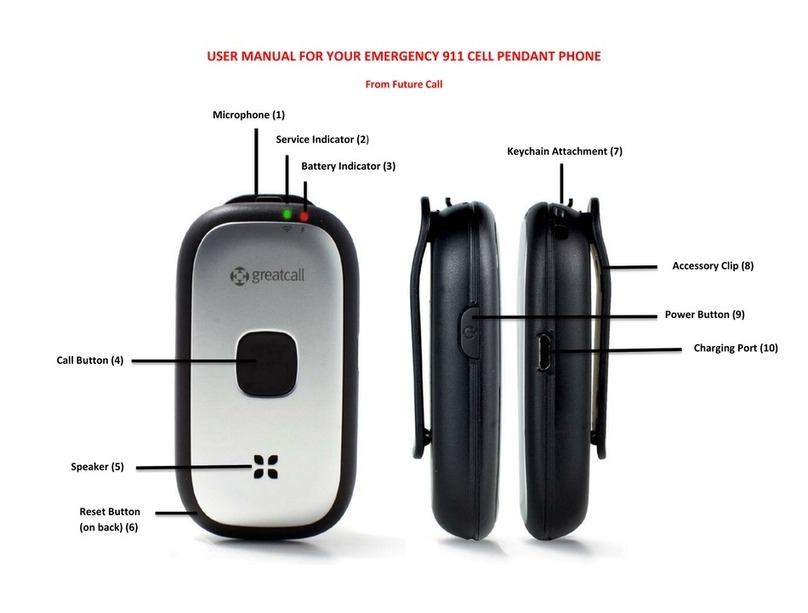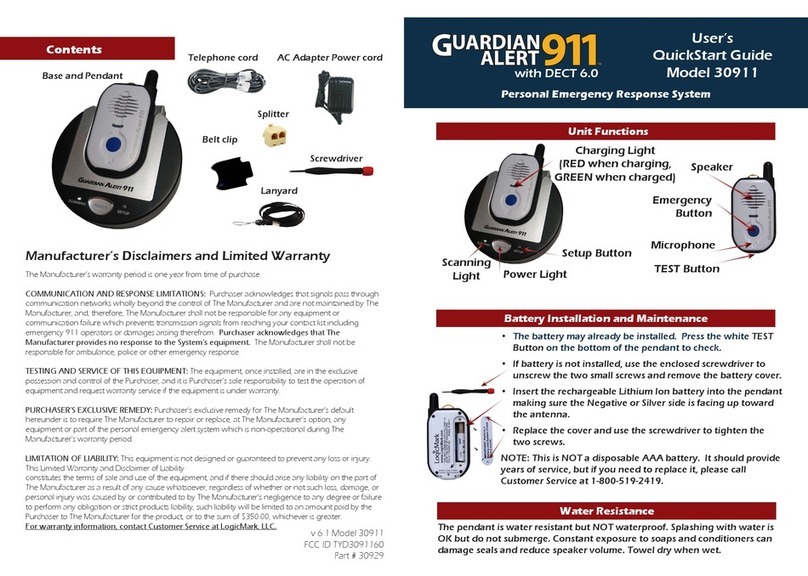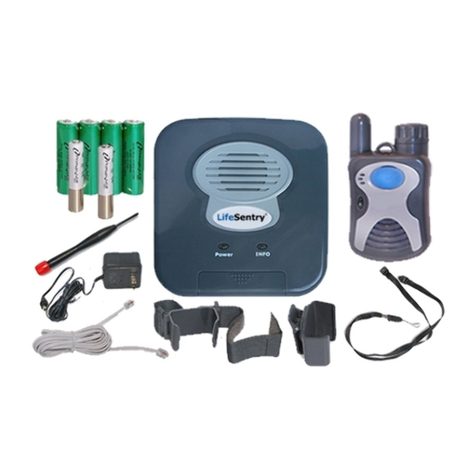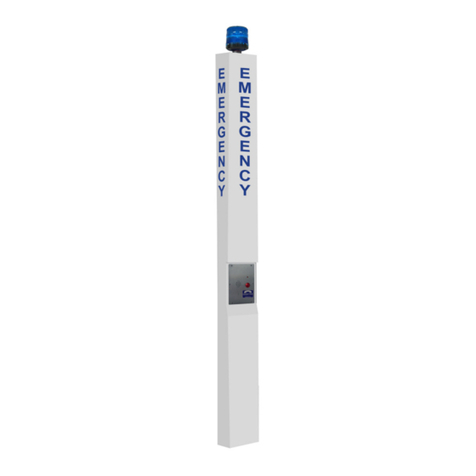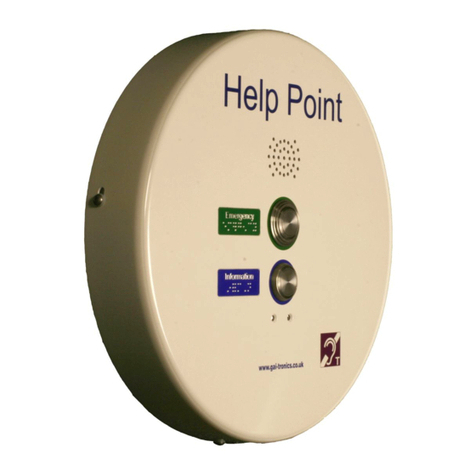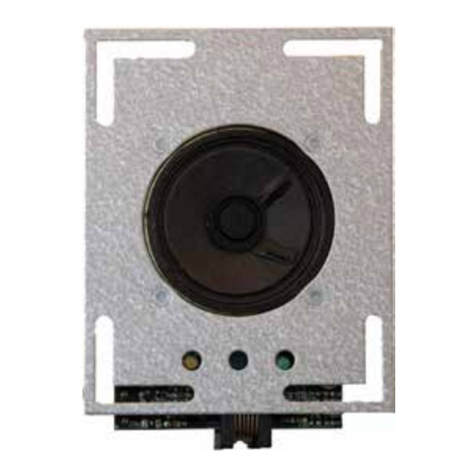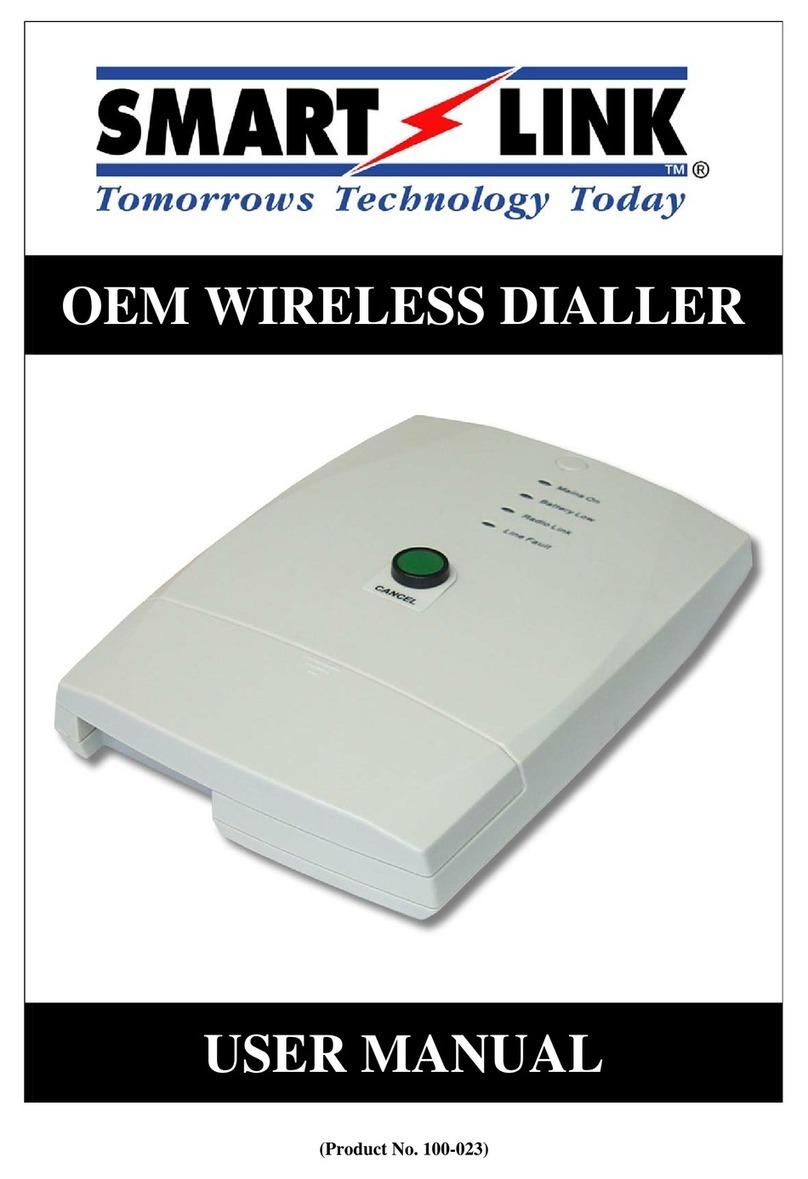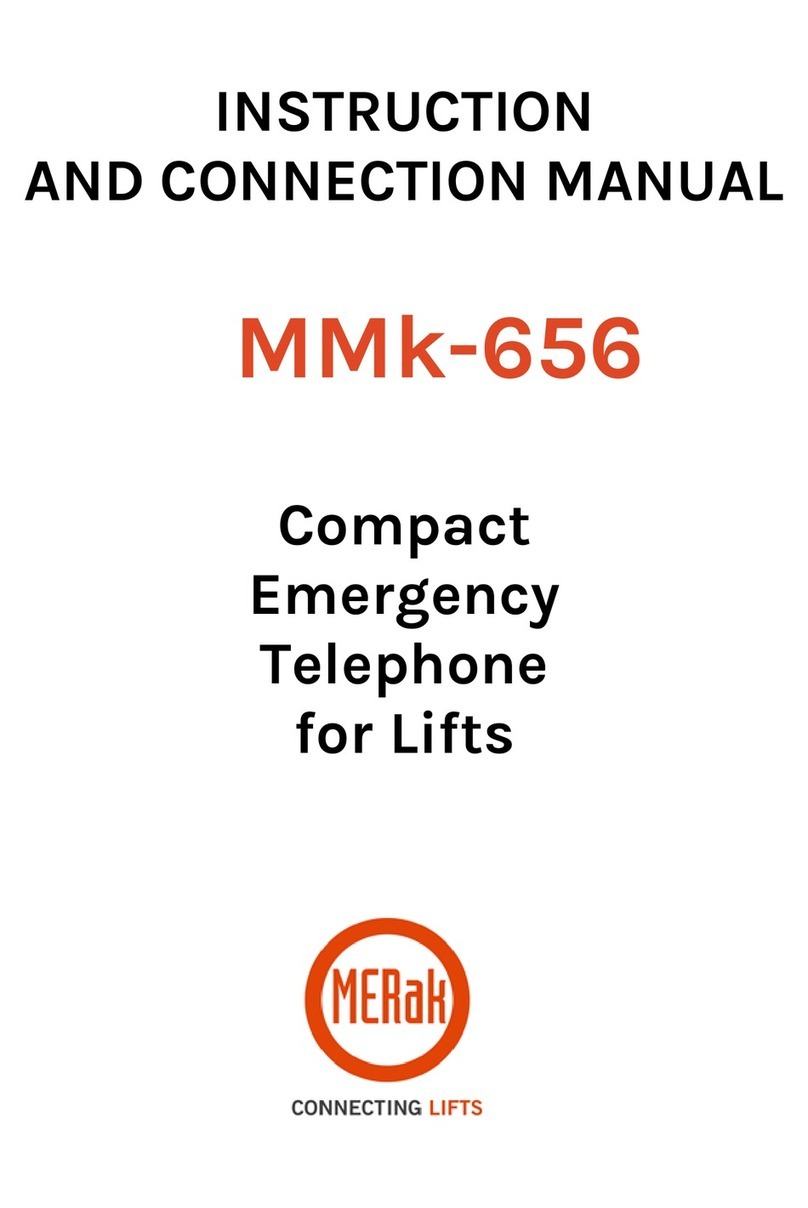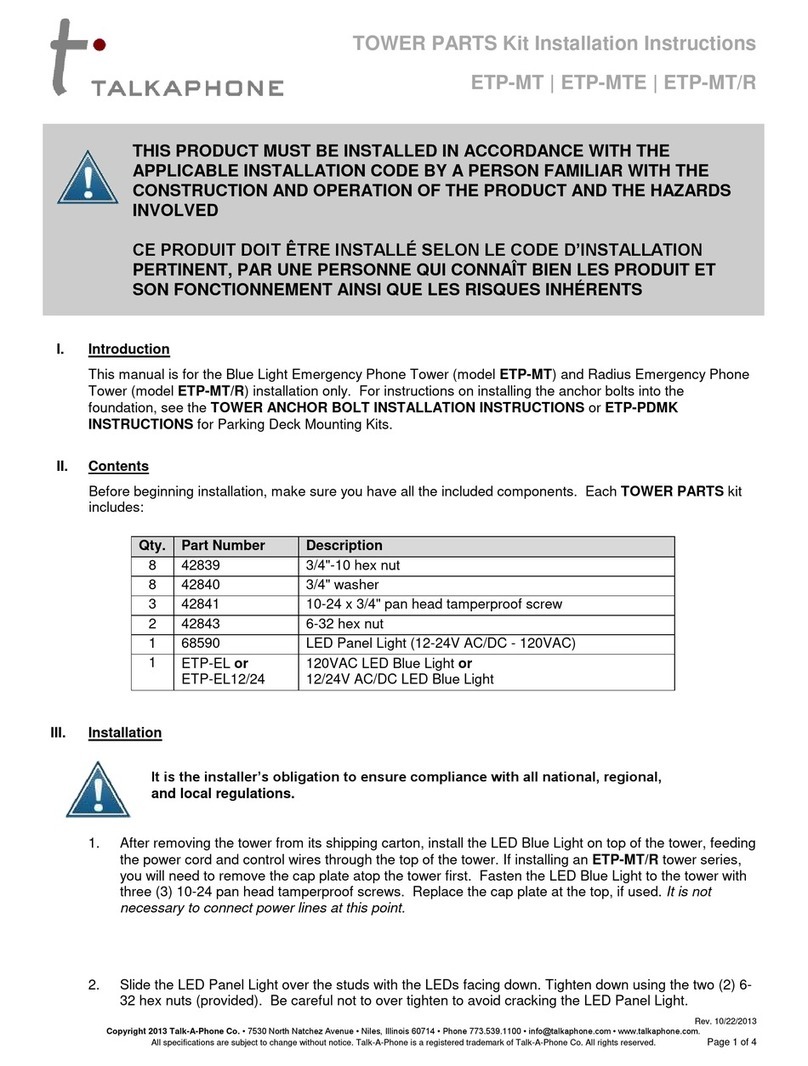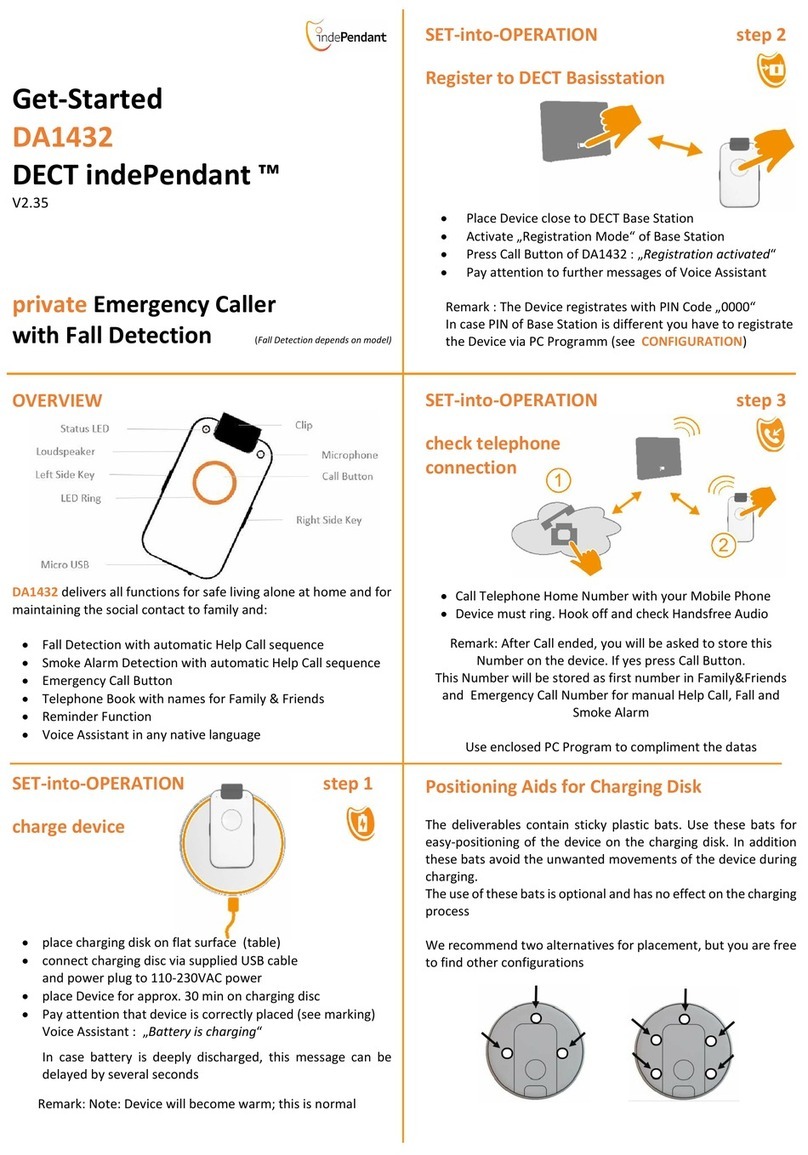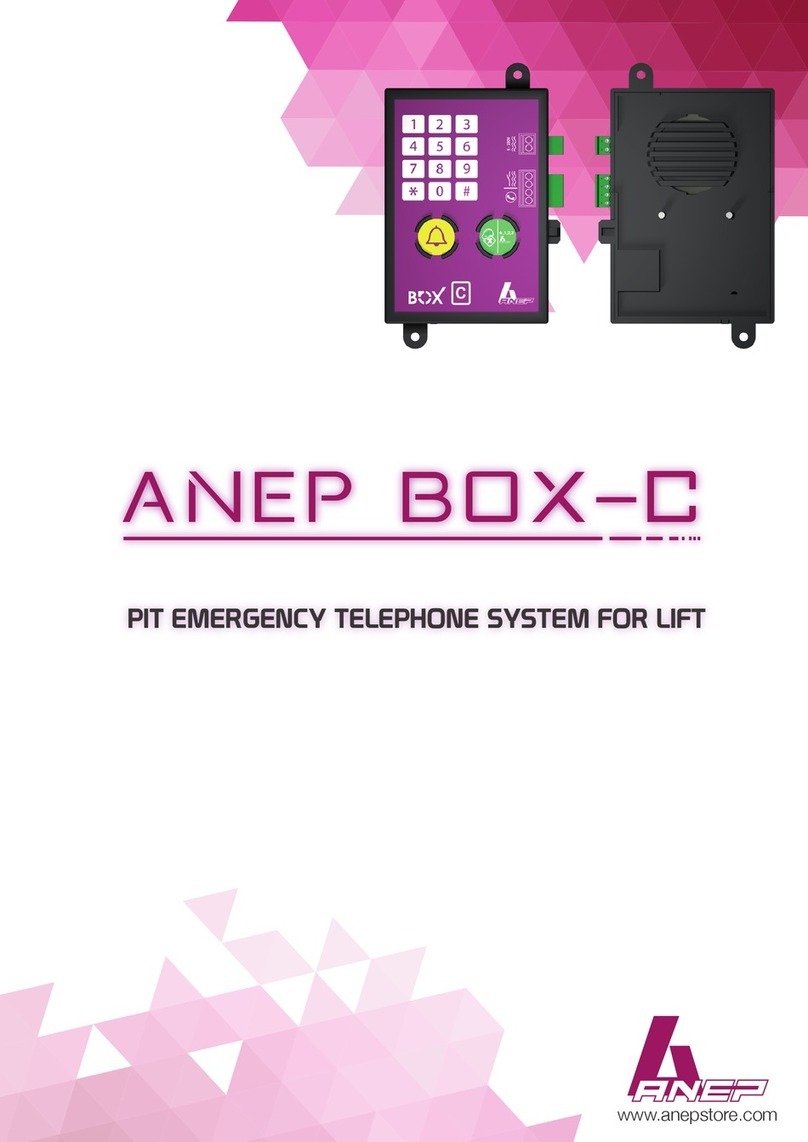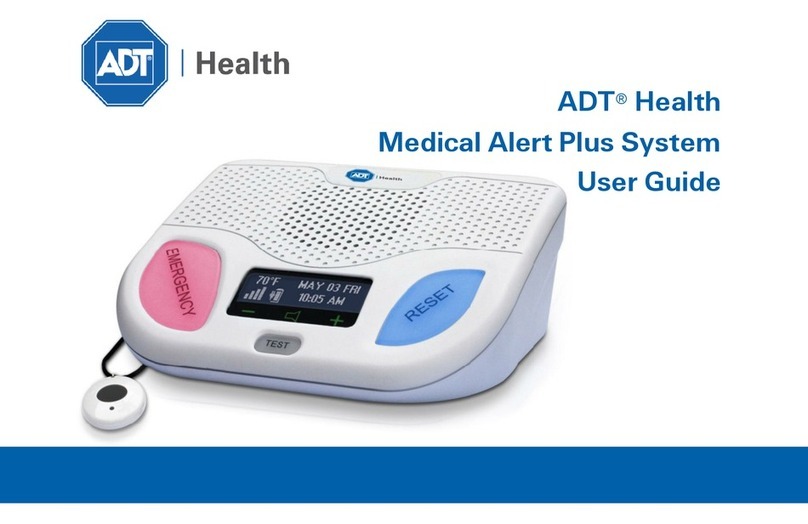
Relay Mode >
Siren ûRelay contacts close when the Alarm
Push is activated, and open again after
the alarm push delay. Typically used to
trigger a siren on the lift car.
Door (NO/CMD) ûDoor release mode, release on
command, default relay state is N/O:
The door release is only activated if the
operator presses the ‘8’ key on their
handset during the initial alarm call or
any follow-up calls. The release will then
remain activated until the call ends.
Door (NC/CMD) ûDoor release mode, release on
command, default relay state is N/C:
The door release is only activated if the
operator presses the ‘8’ key on their
handset during the initial alarm call or
any follow-up calls. The release will then
remain activated until the call ends.
Door (NO/ALM) ûDoor release mode, release on alarm
push, default relay state is N/O. The door
release is activated as soon as the Alarm
Pictogram is lit, and remains activated
until the End of Alarm signal is received.
Door (NC/ALM) ûDoor release mode, release on alarm
push, default relay state is N/C. The door
release is activated as soon as the Alarm
Pictogram is lit, and remains activated
until the End of Alarm signal is received.
PSTN fault ûThe relay contacts default to closed,
and open whenever a PSTN line fault
is detected. When the fault condition
is cleared, the contacts return to the
default closed state.
Tech. fault ûTechnical fault mode - The relay
contacts default to the closed state,
opening whenever any technical fault
is detected by the Memcom+. Once the
fault condition has cleared, the contacts
close again.
Emg. Lighting ûEmergency lighting mode - the relay
contacts default to the open state,
closing within 1 second of a loss of
external power. This allows the use of
the relay to switch backup power to
emergency lighting hardware during an
external power failure. Once external
power is restored, the relay contacts
open again.
Spk. Picto ûIf a dual illuminated alarm push is
connected to the relay contacts:
When the call centre answers an alarm
call the relay contact will close and
trigger the illumination on the alarm
push; alarm push will remain lit until the
call centre ends the call.
Both Pictos üIf a dual illuminated alarm push is
connected to the relay contacts:
When the alarm button is pressed the
relay contact will close triggering the
illumination on the alarm push; alarm
push will remain lit until the call centre
ends the call.
Relay Mode
The relay can be used to switch the power supply to an external
device (e.g. warning siren, door locking systems).
Full Programming Options
Menu Structure Menu Sections explained...
Quickstart >
Tel. Numbers >
Alarm no.1
Alarm no.2
Alarm no.3
Alarm no.4
Tech.no.
Background no.
Call attempts
Settings >
ID Code
Volume
System Cong >
HW Monitoring >
Delays >
COP delay
AS delay
Tech IP delay
Hangup delay
Answer delay
Redial del.
VAD timeout
Messages >
Location
Reassurance
Guidance
Time/Date >
Time
Date
Advanced >
Passcode
Network ID
Next EN81 call
PBX Frequency
Language >
Relay mode >
Relay override>
GMT Oset
Templates
Load Template
Save Template
Del. Template
